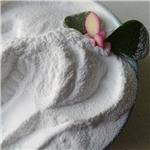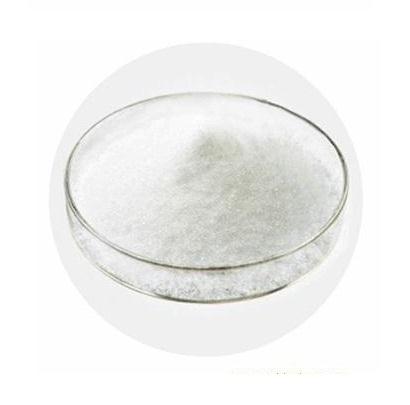Application and benefits of IGF-1 LR3
IGF-1 LR3 is a polypeptide long-chain amino acid peptide hormone. Insulin-like Growth Factor (IGF-1 Long-Arginine 3), an 83-amino acid analog of IGF-1, is a highly anabolic hormone released primarily in the liver with the stimulus of growth hormone (HGH) [1].
Insulin-like growth factor 1 (IGF-1) is a 70-aminoacid polypeptide hormone with endocrine, paracrine, and autocrine effects, which shares structural homology (>60 %) with IGF-2 and proinsulin [2]. It is mainly produced by the liver (accounting for ≈75 % of circulating IGF-1) secondary to growth hormone (GH) and insulin endocrine stimulation in the liver. Conversely, IGF-1 acts to provide an inhibitory feedback signal on GH secretion in the hypothalamus by stimulating somatostatin production in the pituitary [3–5].

Physiological effect
IGF-1 is also produced locally in all bodily tissues [6]. IGF-1 availability is tightly regulated by the so-called insulin- like growth factor binding proteins (IGFBPs), which may act by increasing IGF-1 half-life, from minutes to hours (most commonly by forming a tertiary complex with Acid-Labile Subunit and IGFBP3), however blocking its binding to the insulin-like growth factor 1 receptor (IGF- 1R) [7]. IGFBPs can also act to guide IGF-1 to specific tissues, or even to inhibit or potentiate IGF-1 actions by acting as an independent substrate for the IGF-1R and/or other specific membrane, intracellular or nuclear receptors [7]. To date there have been described 6 high affinity IGFBPs [7]. Moreover, insulin-like growth factor binding protein related proteins (IGFB- PrPs) have been recently characterized, which aid the metabolic effects of the hormone but their role remains unclear [8]. Relevant roles of each specific IGFBPs will be further discussed when applicable to metabolism since there is a huge emerging world of IGFBPs independent actions.
IGF-1 can act over its putative receptor (IGF-1R) or it can also bind to the insulin receptor (IR), albeit with less affinity [9]. In addition, there is a hybrid receptor with components of the IR (one α and one β-chain) and the IGF-1R (one α and one β-chain), to which both insulin and IGF-1 can bind to, but with less affinity than that of their putative receptors [9]. All of these receptors have tyrosine kinase activity, hence are natural and potent activators of the Akt pathway [9].
Application and benefits
IGF-1 LR3 is primarily used to increase the biological activity of IGF. When IGF-1 LR3 is mobile in the body, it functions differently in individual types of tissues. For example, in muscle tissue, it forces the muscle to be more sensitive to insulin's effects, such as the decrease of fat storage [10].
IGF-1 LR3 is recommended to patients with the following conditions: hormone deficiency in children that results in short stature, adult growth deficiency, short bowel syndrome, short stature due to Turner Syndrome, adult deficiency associated with pituitary tumors or treatment of these tumors and muscle-wasting disease related to HIV/AIDS [10].
Enhanced growth hormone levels that are necessary for bone development during childhood and throughout adult life; Increase of lean muscle mass; Improvement of athletic performance; Increased hyperbolas in muscle cells leading to fuller muscle tissues; Improvement of muscle recovery and reduced recovery time; Reduction of body fat; Increased metabolism; Regulation of fat storage and prompts fat to bed used for energy production; Facilitation of protein synthesis in the body; Up-regulation of anti-oxidant benefits and ligament strength [1,10,11].
Mechanism of action
IGF-1 LR3 binds to cell receptors in the muscle cells and activates cell communication, which then improves the growth rate of muscles [1,11].
IGF-1 LR3 obstructs the movement of glucose into the body’s cells. This facilitates fat burning and the use of fat in the body for the production of energy. IGF-1 LR3 has a life in the body for about 20-30 hours and therefore enhance the growth amount of muscle for a whole day [1,11].
Administration and dosage
Mode of Administration: Subcutaneous injection to a fleshy part of the body, typically to the stomach or abdominal area. IGF-1 LR3 can also be administered intramuscularly [12].
Before administering IGF-1 LR3, always be sure to use a clean and sterile syringe.
Hold the IGF-1 LR3 vial upright and insert the syringe in the center of the cap.
Draw the plunger until you have the correct amount in the syringe and carefully remove it. Before administering the syringe, use alcohol to cleanse the area of skin. Pinch the skin around the area to be injected, leave about 2 cm on each side. Hold the syringe at a 90-degree angle to your skin and swiftly insert the syringe. Depress the plunger fully, until the syringe is empty, and carefully draw out.
Dosage Amount:20mcg (0.02mg) - 100mcg (0.1mg); Dosage Frequency: Once daily
It is recommended to administer IGF-1 LR3 once daily for six weeks. After six weeks, take approximately 20-40 days off before starting a new course IGF-1 LR3 [12].
Consume protein with a combination of carbohydrates 15-20 minutes before administering IGF-1/ LR3 for best results [12].
Side effect
Some possible side effects of IGF-1 LR3 may include the following: muscle and joint pain, nausea, headaches, hypoglycemia (usually when IGF-1 LR3 is administered in continuous high doses) and may be associated with increased risk of developing some cancers.
References
1. Gillespie, C. M., A. L. Merkel, and A. A. Martin. "Effects of insulin-like growth factor-I and LR3IGF-I on regional blood flow in normal rats." Journal of Endocrinology 155.2(1997):351-358.
2. Rinderknecht E, Humbel RE. The amino acid sequence of human insulin‐like growth factor I and its structural homology with proinsulin. J Biol Chem. 1978;253:2769–76.
3. Berelowitz M, Szabo M, Frohman LA, Firestone S, Chu L, Hintz RL. Somatomedin‐C mediates growth hormone negative feedback by effects on both the hypothalamus and the pituitary. Science. 1981; 212:1279–81.
4. Ohlsson C, Mohan S, Sjögren K, Tivesten Å, Isgaard J, Isaksson O, Jansson JO, Svensson J. The role of liver‐derived insulin‐like growth factor‐I. Endocr Rev. 2009; 30:494–535.
5. Böni‐Schnetzler M, Schmid C, Meier PJ, Froesch ER. Insulin regulates insulin‐like growth factor I mRNA in rat hepatocytes. Am J Physiol. 1991; 260: E846–51.
6. D’Ercole AJ, Stiles AD, Underwood LE. Tissue concentrations of somatomedin C: further evidence for multiple sites of synthesis and paracrine or autocrine mechanisms of action. Proc Natl Acad Sci USA.1984;81:935–9.
7. Clemmons DR. Role of insulin‐like growth factor binding proteins in controlling IGF actions. Mol Cell Endocrinol. 1998; 140:19–24.
8. Liu J, Kosma V‐M, Vänttinen T, Hydén‐Granskog C, Voutilainen R. Gonadotrophins inhibit the expression of insulin‐like growth factor binding protein‐related protein‐2 mRNA in cultured human granulosa‐luteal cells. Mol Hum Reprod. 2002;8: 136–41.
9. Kim JJ, Accili D. Signalling through IGF‐I and insulin receptors: where is the specificity? Growth Horm IGF Res. 2002; 12:84–90.
10.https://www.aspirerejuvenation.com/igf-1-lr3/
11.Tomas, F. M., et al. "Anabolic effects of insulin-like growth factor-I (IGF-I) and an IGF-I variant in normal female rats." Journal of Endocrinology 137.3(1993):413-421.
You may like
Related articles And Qustion
See also
Lastest Price from IGF-1 LR3 manufacturers

US $20.00/box2025-12-13
- CAS:
- 946870-92-4
- Min. Order:
- 1box
- Purity:
- 99
- Supply Ability:
- in stock

US $20.00/box2025-10-17
- CAS:
- 946870-92-4
- Min. Order:
- 1box
- Purity:
- 99
- Supply Ability:
- in stock



